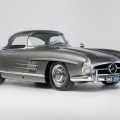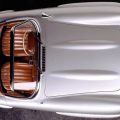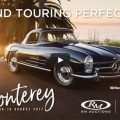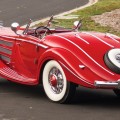Original Article – By Mike Hanlon – July 14, 2015
http://www.gizmag.com/1938-mercedes-benz-540k-special-roadster-nawrocki-auction/38375/
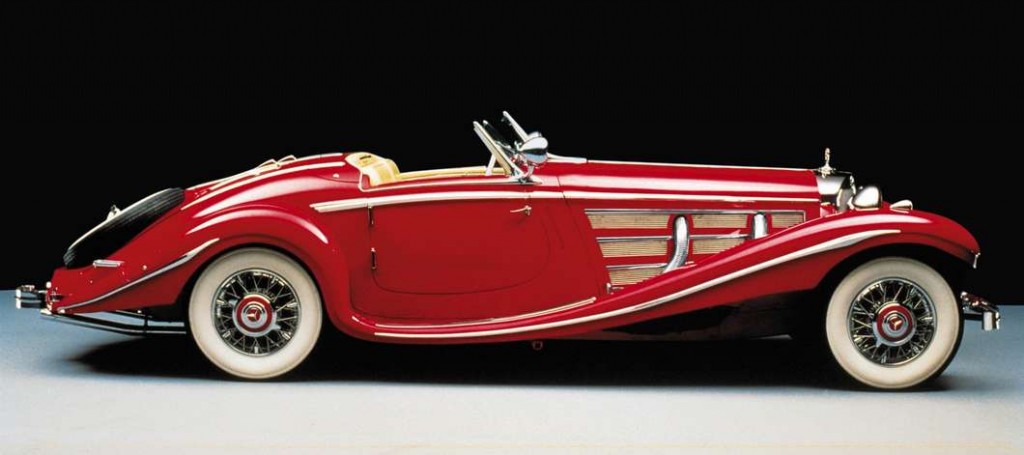
This 1938 Mercedes-Benz 540K Special Roadster by Nawrocki goes to auction on Saturday, July 18, 2015. It is expected to sell for between $1.2 and $1.8 million (Credit: Auctions America)
The size of the Southern California collector car market bears no greater testimony than the very recent emergence of Auctions America’s annual sale at Santa Monica Airport’s Barker Hangar.
Run for the first time in 2013 just a week prior to the beginning of Monterey Car Week that year, the inaugural auction was successful, and the 2014 auction gathered further momentum, generating $17.5 million in sales.
For 2015, the auction has been moved several weeks further away from the epicenter of the global collector car market to July 17 – 18 (Monterey Car Week runs August 10-16 this year) and the early momentum of the first two years appears to have built further.
Evidence of this is the number of high profile cars being offered that would in earlier years have been expected to travel 300 miles north to the auction blocks of Pebble Beach. Many of the cars on sale in Monterey in mid-August travel much further in search of the international money which congregates there.
The Mercedes-Benz 540K Spezial Roadster
Only 25 Mercedes–Benz 540K Spezial Roadsters were ever made, far fewer have survived to this day, and the massive, handcrafted art deco sculpture was the absolute pinnacle of automotive desirability from the moment it was launched at the Paris Auto Salon in 1936. The image above is from the 1936 Berlin Internationale Automobil Ausstellung (International Automobile Exhibition) in February of that year and shows the car from which the 540K Spezial Roadster was developed – the 500K Spezial Roadster.
Germany created the automobile industry in 1886 with Carl Benz’s Autowagon and as 1936 was the fiftieth anniversary, it was a much celebrated year in the powerful German automobile industry.
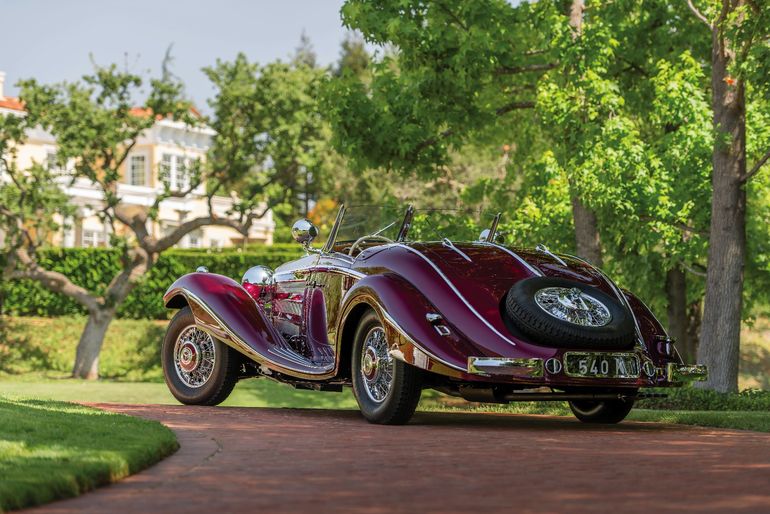
Hence the 540K unveiled in Paris was meant to be particularly significant in more ways than one. It was lighter and more powerful than it’s predecessor, and the Spezial Roadster was seen as the absolute pinnacle of automotive excellence when it was shown at the 30th Salon de l’Automobile in Paris for the first time.
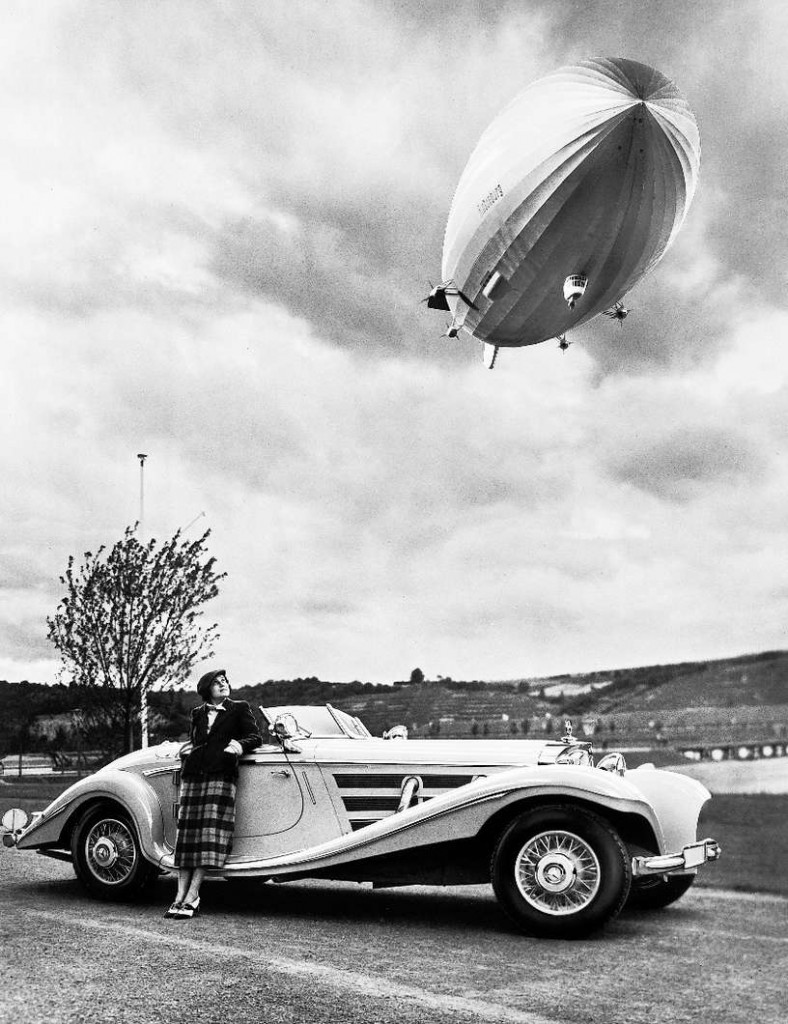
An advertising shot of the Mercedes-Benz 540K Spezial Roadster from 1936
The Mercedes-Benz advertising image of the time pictured above, shows the Spezial Roadster under the LZ-129 Hindenberg airship, also regarded as the height of technology, luxury and modernity following its launch in March, 1936 (though not for long). Both were symbols of Germany’s technological knowhow.
One of the world’s greatest automotive historians, Griffith Borgeson, wrote of the Spezial Roadster: “There is a harmony and balance of line and mass… which very simply defies any conceivable improvement. They are sculptural perfection… For many people of taste, more beautiful cars will never be designed and built.”
The Spezial roadster was also very fast, having been designed with thought towards the German autobahns which Hitler’s government was building at the time.
The 540K engine produced 115 bhp without the supercharger engaged and 180 bhp when the compressor clutched in at full throttle (or as desired) giving it a top speed approaching 110 mph. When tested by Britain’s Motor magazine, the 540K hit 102 mph at the end of a quarter-mile.
This may not seem that impressive, because shopping trolleys made in countries you’ve never heard now routinely achieve such top speeds, but this was eighty years ago and you really do need to see one of these bohemoths in the flesh to comprehend just how big it is – it’s five meters long (196.9 inches) and 1.8 meters wide (70.9 inches). Check the specs on your car and you’ll understand why it’s perfromance was so “spezial”in the day.
In May 1938, the 540K was tested by Autocar magazine (U.K.) and achieved the highest top speed of any car it had ever tested: 104.65 mph (168.5 km/h).
“One’s foot goes hard down, and an almost demoniacal howl comes in,” reported Autocar’s test driver H. S. Linfield. “The rev counter and speedometer needles leap round their dials: there is perhaps no other car noise in the world so distinctive as that produced by the Mercedes supercharger.”
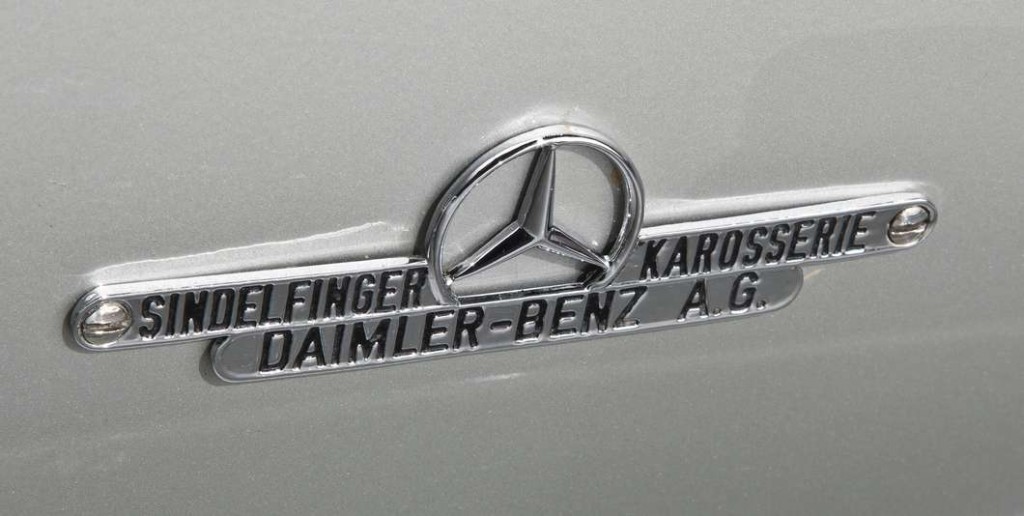
There’s another factor involved with Mercedes-Benz cars that isn’t often recognized. Common practice prior to WW2 for people of considerable wealth, was to buy the base car from the best manufacturers (Bugatti, Bentley, Duesenberg, Rolls-Royce, Talbot-Lago, Delahaye et al.) and have a custom body created by one of the recognized coachbuilders of the day (Saoutchik, Figoni et Falaschi, Walter M. Murphy, Dietrich, Bohman & Schwartz, Walker-LaGrande, Gurney Nutting, Bertone, Castagna ad infinitum).
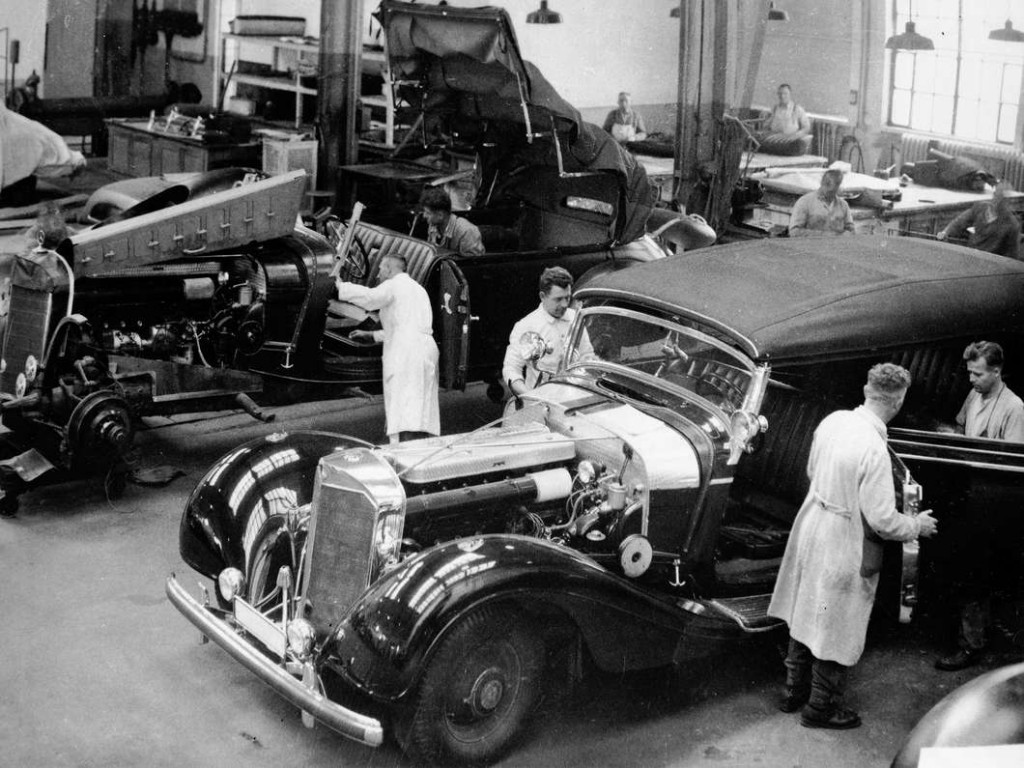
Mercedes-Benz cars were sometimes bodied in this way (Cadogan, Murphy and Saoutchik bodied Mercedes-Benz cars in the top 200 most expensive of all time), but it differed from other elite car manufacturers in that it had its own proprietary coachbuilding plant at Sindelfingen where many of the world’s most beautiful and expensive cars were created.
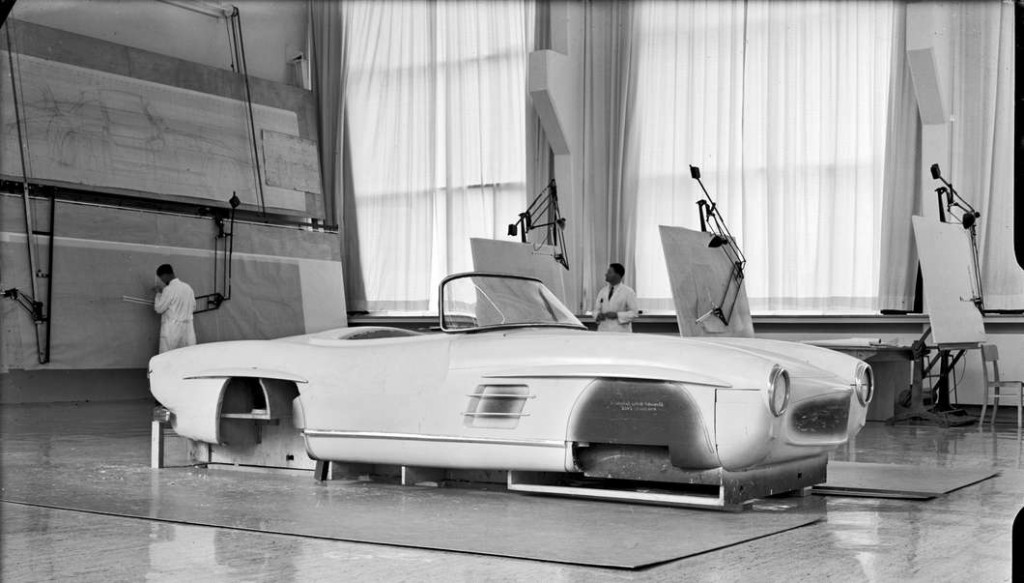
Sindelfingen recently celebrated its centenary and today still produces upper-range and luxury class vehicles such as the SLS AMG Coupé and Roadster and houses the company’s Research & Development department. The 300SL Gullwing and roadster were styled here (pictured), and across the years, all of the company’s major models were styled and hand-crafted there, including the Spezial Roadster.
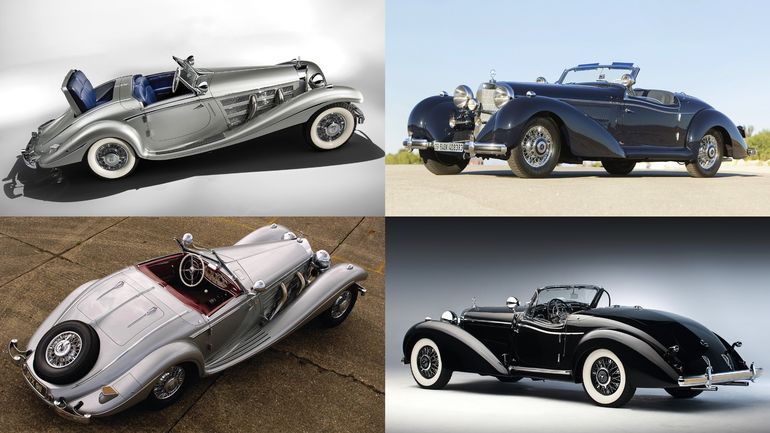
From top left clockwise, the 1937 Mercedes-Benz 540K Spezial Roadster which fetched US$9,680,000, the 1939 Mercedes-Benz 540K Special Roadster which fetched US$7,480,000, the 1939 Mercedes-Benz 540K Spezial Roadster which fetched US$4,620,000 and the 1937 Mercedes-Benz 540K Special Roadster which fetched US$8,106,150.
For sheer beauty combined with outstanding performance, nothing compares with the Mercedes-Benz 500K and 540K supercars of the 1930s. Chief among these, certainly, is the 540K Special Roadster.
The 500K and 540K were the work of engineer Hans Nibel. Born in Bohemia in 1880, Nibel studied at Munich Technical College and joined Benz & Cie in 1904, becoming chief engineer four years later. It was he who championed shaft drive and created the Blitzen Benz speed record car of 1910. He was responsible for the powerful pre-World War I touring cars and for the postwar sports models, but after the merger he kept a lower profile until he was named technical director following Porsche’s departure in 1929. Throughout the period, however, he concentrated on advanced chassis engineering that became the mainstay of Mercedes-Benz in the 1930s.
For the new cars, Nibel came up with a straight-eight, a pushrod ohv design of 3,823-cc. The new Typ 380 had all-independent suspension, which Nibel had pioneered on the plebeian Typ 170 sedan. A double-wishbone design with coil springs was used in front, with coil-sprung swing axles at the rear. The 380, however, proved to be somewhat underpowered, making 90-hp when normally aspirated, 140-hp with the double-vane Roots-type supercharger, a bit underwhelming for a two-ton car. Nibel then came up with a larger 5-liter engine giving 100/160-hp, introduced in 1934 as the Typ 500K, “K” in this case meaning kompressor or supercharger. The wheelbase was extended to 3,290-mm (129.5-inches), and a range of cabriolets, roadsters and sedans was offered. Production of 500Ks totaled 354 over three years, followed by a further 419 540Ks with a larger, 5,401-cc engine. The larger powerplant was fitted with the same type Roots supercharger. This engaged at full throttle, raising horsepower from 115 to 180, or could be manually applied at part throttle if desired.
Nibel’s magic with the engine brought results. The Autocar tested a 500K and clocked a 0- to 60-mph time of 16.5 seconds (remarkable for the mid-1930s) and a top speed of 100-mph, the blower letting out “its almost demoniacal howl” when it was engaged. Motor enthused “here is a massive ‘unbreakable’ car capable of traveling indefinitely at high speed.” Another reporter cited the “sheer insolence of its power.”
Factory coachwork from the Daimler-Benz works at Singelfingen came in many variations. Styled and engineered by Hermann Ahrens, these svelte creatures display an unusual degree of élan for manufacturer-produced bodies. Built on the short, 2,980-mm (117.3-inch) wheelbase, the Cabriolet A was a two-passenger drophead coupe, of which 83 were built. Cabriolets B and C were four-seaters of “four-window” and “two-window” configuration, respectively, both on the “normal” 3,290-mm (129.5-inch) wheelbase. A long wheelbase, 3,880-mm (152.8-inches), was reserved for an even dozen convertible saloons.
Taking proportions to the extreme, Ahrens also created a two-passenger roadster on the normal chassis. With room to spare, the radiator was moved back 185-mm, and everything behind it the same distance. This variation was called fahrgestell mit zurückgesetztem (chassis with setback) and gave the car a completely different air, looking lower and longer. Called “Special Roadster,” just 25 were built.
This car was originally built as a 540K Cabriolet B. The current owner purchased it from a collector and broker of high-quality European cars in Los Angeles. He had reportedly acquired it from the estate of Dr. George Bitgood, a Middletown, Connecticut veterinarian. Fondly revered in his locale as “the vet of last resort,” Dr. Bitgood also had international renown as a collector of prewar Mercedes-Benz supercharged automobiles. Among them were Jack Warner’s 1937 540K Special Roadster, purchased from Dr. Sam Scher, and Hermann Göring’s Special Roadster, the “Blue Goose,” which he acquired from the Tunick brothers, plus another dozen noteworthy specimens.
As purchased, the car was in considerable disrepair, particularly the body, which needed to be rebuilt. As the Cabriolet B shared the chassis, drivetrain, lights, wire wheels and instruments of the Special Roadster, the new owner decided to rebody it as in that manner.
For this, he selected Cass Nawrocki of Moose Lake, Minnesota, who is well-known for outstanding coachwork and metalworking. Nawrocki had completely rebodied an original 540K Special Roadster and had patterns and jigs to create another body. He also had the rusted original fenders, doors and body parts from that rebodied Special Roadster to use for reference. A former employee of the late Tom Kried, Nawrocki wrote the definitive book on bodywork, Any Impossibility in Shaping Metal. For the new project he built a new wooden structure of kiln-dried eastern ash, then painstakingly created new exterior panels and affixed them to the wood frame. The process took two years in all, and is referenced in Nawrocki’s book.
The new body was then taken to Jim Friswold, the well-known Mercedes restorer in Portland, Oregon. Friswold had completed a superb Cabriolet A that had scored 100 points at Pebble Beach. No expense was spared in recreating this masterpiece, which took another three years. On its first time out, the car was rewarded with Best of Show at the Forest Grove Concours d’Elegance in Portland, Oregon. During the past year, it won the Most Glamorous Car award at the Niello Concours at Serrano in El Dorado Hills, California.
Painted in a metallic wine red that replicates Mercedes’ color of the period, this car is nothing less than stunning. Its condition, of course, is virtually new. Thus all brightwork is of the highest quality, as is the luscious tan leather interior. A brown canvas top snaps into place, like an original, should bad weather force the occupants to take cover. The foregoing list of awards speaks to the overall quality.
Mercedes-Benz 540K Special Roadsters seldom appear on the market in any form. This car thus represents a very special opportunity.























